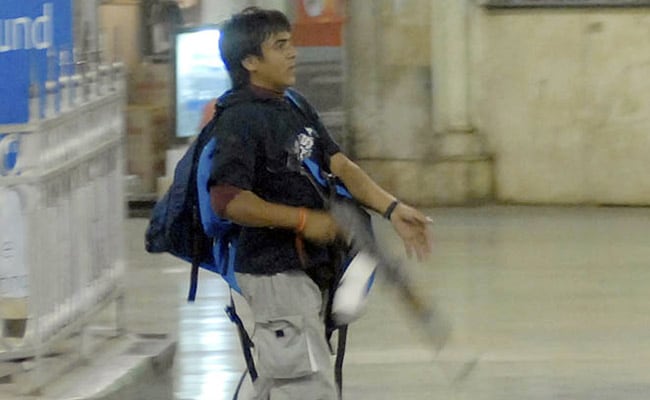
The then Bush administration had mobilised special forces to neutralise Pakistan-based Lashkar-e-Taiba (LeT) terrorists holding people hostage in hotels during the deadly Mumbai terror attack in November 2008, a former White House official has revealed.
But, before the Indian authorities gave the necessary clearances and the special forces could take off for Mumbai from an overseas regional location, Indian commandos had already completed their job, said Anish Goel, who was part of the White House's 26/11 crisis management group.
"I'm a bit hazy on the details now. It's 10 years out. But, we were offering to send like commando teams to Mumbai to infiltrate the hotels and root out the terrorist cells that were there," Mr Goel, the director of South Asia in the National Security Council of the White House at the time of the 26/11 attack, told PTI.
Some 166 people, including Americans, were killed in the attack carried out by 10 LeT terrorists. Nine of the attackers were killed by police while lone survivor Ajmal Kasab was captured and hanged after being handed down the death sentence by an Indian court.
Recalling the developments at the White House during the 2008 Thanksgiving weekend, when LeT terrorists went on a rampage in Mumbai for several days, Mr Goel said the US had "some (special forces) teams in the region that we're willing to deploy quickly".
The US also offered forensics assistance to help determine who was the cause of this (attack) and where the attackers were from, he said, adding the White House was ready to help India with "anything" that they might've wanted to deal with the terrorist attack.
"In the very beginning the Indians were reluctant to accepting US assistance because I think they felt that we can take care of this on our own. But, as the attack continued to drag on for two-three day, they became more accepting of US assistance," Mr Goel said.
The Indians "didn't accept it (US offer) in time for the commandos to arrive and make a difference," he said. "I think technically they eventually cleared their (US commandos) arrival, but by the time the team was mobilised, the Indian commando teams had taken over and neutralised the attack," he said.
As a result, the US commandos never landed in India.
"It's hard to recall exact details now, but I don't think the US commandos ever actually made it to India," he said in response to a question, noting that at this time, he does not know how big the team of mobilised American commandos was.

Ajmal Kasab was the lone terrorist who was arrested from the 26/11 attack. He was tried and hanged after he received the death sentence
"As the attack dragged on after two, three days, I think they came to the realisation that it was much more sophisticated than they had thought," said Mr Goel, who now is a fellow in think-tank New America's International Security programme.
As the news of terrorist attack broke, Mr Goel was driving from Washington DC to his parent's house, some eight hours away.
"On the drive I noticed that my blackberry was filling up with messages, but since as I was driving I didn't check my messages. When I reached my parents' house, I checked my blackberry and that's when I first learned about the Mumbai attacks," he said, recollecting the events of the day 10 years ago. It was immediately clear that it was a terrorist attack, he added.
Though, he did not immediately rush to Washington DC, but he was constantly on his blackberry, phones and conference calls throughout the weekend. The then US National Security Adviser Stephen Headley advised everyone involved in the crisis management team to come back to Washington DC early.
The first reaction, he said, was to try and learn exactly what was going on because there was a lot of misinformation.
"The press was reporting all sorts of things. We didn't know how much of that was true. So the first part was just trying to get a handle on everything, like what actually is happening," he said.
"The second part was to try and understand who is responsible. The third part was to contact leaders in both India and Pakistan to urge restrain and urge calm. The fourth thing we were doing is we were working with the Indian government and offering them as much assistance as they wanted or that we could offer in terms of dealing with the attack," Mr Goel said.
The US, he said, offered technical assistance.
"We were offering law enforcement capabilities. We were offering to send special forces to help bring the attack under control. We were trying to ensure that it didn't result in a larger conflagration in the region. It was very much a multi-pronged approach, in the first few days," said the former White House official.
Track Latest News Live on NDTV.com and get news updates from India and around the world

